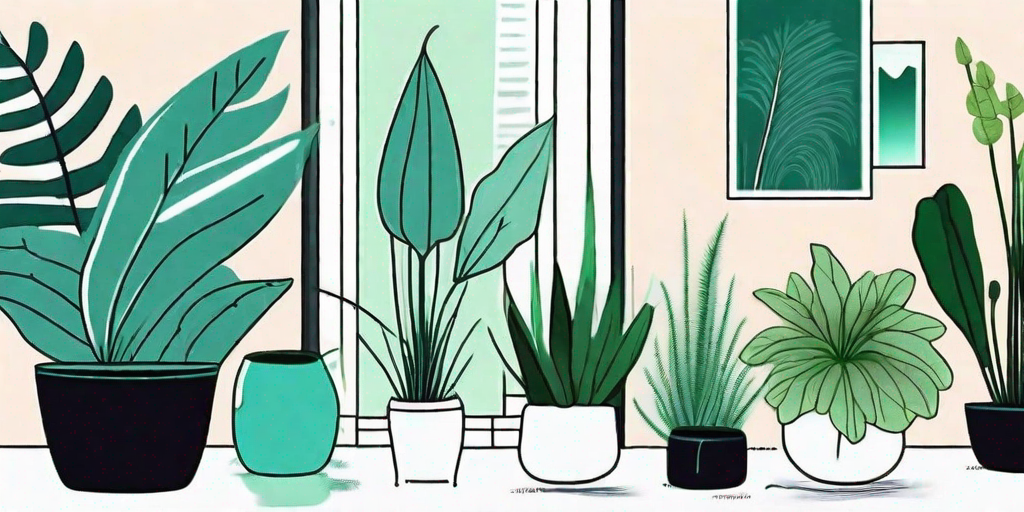
Dry air can be a real pain, can't it? It's like that one guest at your party who just won't take the hint and leave. It overstays its welcome, causing a myriad of problems like dry skin, irritated eyes, and even respiratory issues. But don't worry, we've got a cheeky, green solution for you - plants! Yes, you heard it right. Those leafy companions can do more than just sit pretty in your living room. They can help you beat dry air, and we're going to tell you how.
Understanding the Problem: Dry Air
Before we dive into the solution, let's take a moment to understand the problem. Dry air is air that has a low humidity level. This usually happens during the winter months when the cold air outside interacts with the warm air inside, reducing the amount of moisture in the air.
Now, you might be thinking, "So what? It's just air." But dry air can cause a lot of discomfort. It can dry out your skin, leading to itchiness and flakiness. It can irritate your eyes, nose, and throat. It can even make you more susceptible to colds and other respiratory infections. So, it's not just air, it's a menace!
The Green Solution: Plants
Now that we've understood the problem, let's move on to the fun part - the solution. And it's not just any solution, it's a green, leafy, and absolutely gorgeous solution - plants. Plants are natural humidifiers. They release moisture into the air through a process called transpiration. So, by having plants in your home, you can increase the humidity level and beat dry air.
But not all plants are created equal. Some are better humidifiers than others. So, let's take a look at some of the best plants for increasing humidity in your home.
Areca Palm
Areca Palm, also known as the Butterfly Palm, is a superstar when it comes to humidifying your home. This tropical beauty releases copious amounts of moisture into the air, making your home feel more like a tropical paradise than a desert.
Plus, it's a pretty easy plant to take care of. It needs bright, indirect light and water once the top inch of soil is dry. So, it's perfect for those of us who don't have a green thumb.
Spider Plant
The Spider Plant is another great option. It's not as thirsty as the Areca Palm, but it still does a good job of increasing humidity. Plus, it's a tough little plant that can tolerate a lot of neglect. So, if you're the forgetful type, this might be the plant for you.
Spider Plants like bright, indirect light and well-drained soil. They also prefer to dry out between waterings. So, if you're the type to forget to water your plants, the Spider Plant won't hold it against you.
How to Care for Your Humidity-Boosting Plants
Now that you've got your humidity-boosting plants, you need to know how to take care of them. After all, a dead plant won't do much to increase humidity, will it?
Most humidity-boosting plants are tropical, which means they like warm temperatures, high humidity, and bright, indirect light. But each plant has its own specific needs. So, make sure to do your research before bringing a new plant home.
Watering
When it comes to watering, less is more. Overwatering is the number one killer of houseplants. So, make sure the top inch of soil is dry before watering. And always use a pot with drainage holes to prevent water from sitting in the bottom and causing root rot.
Remember, your plants are not camels. They don't need to store water for future use. So, give them a drink when they're thirsty, but don't drown them.
Lighting
Lighting is another important factor to consider. Most humidity-boosting plants like bright, indirect light. This means they should be placed near a window, but not directly in the path of the sun's rays.
Think of it like this - your plants are like vampires. They like the light, but they don't want to burn. So, give them a spot where they can enjoy the light without getting scorched.
FAQs
Can all plants increase humidity?
While all plants release moisture into the air through transpiration, some do it more than others. Tropical plants like the Areca Palm and the Spider Plant are particularly good at increasing humidity.
How many plants do I need to increase humidity?
The number of plants you need depends on the size of your space and the specific plants you choose. As a general rule, you should aim for at least one large plant or several smaller ones per 100 square feet.
Can plants replace a humidifier?
While plants can increase humidity, they might not be able to replace a humidifier, especially in very dry environments. However, they can certainly help, and they're a lot prettier to look at.
Conclusion
So, there you have it. Dry air is a nuisance, but it's not unbeatable. With the right plants and the right care, you can increase the humidity in your home and make dry air a thing of the past. So, go ahead, get some green friends, and start enjoying the benefits of a more humid home.















